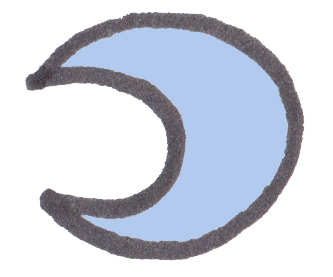
Story Stone ACTIVITIES
Welcome to our digital instruction booklet, of a sort! Included in this page are ways to play or work with story stones.
the simplest way: Go!
another simple way: See what's there.
Choose a stone.
Tell a story.
Listen to stories.
want more? see below
For those that like specific directions, we've included five different ways you can use the stones. When you order your own story stones, you will receive an instruction booklet including these activities and more! Stay tuned for download friendly versions as we'll be adding them here soon!
Group Activities
In general, to use story stones with groups, we recommend choosing a framing question based on your purpose for being together. Use that question and one of the following activities (or create your own). Adjust based on the number of people in your group and your available time. For the following activities we’ve assumed about 10 people per group + a stone collection of 25ish.

ACTIVITY 1: one person stories
Goal: to get to know each other
Roles: each person is the storyteller for one round, others are listeners, one is timekeeper.
Setup: Lay out your story stones so they are all visible. Decide how much time will be allotted for each story.
Step 1: Share the activity with your group: "We will each get the opportunity to tell a story using story stones as well as listen to others’ stories. We will have someone keep time to make sure there is time for everyone’s voice. When you are storyteller, choose one or more story stones as prompts for the beginning, middle and end of your story. It can be a story from your life or from your ‘future life’ (what you dream your life will be like in your future). When you are timekeeper, set a timer giving everyone equal time to tell their stories. Give the storyteller a signal when one minute is left in their time. When you listening, listen for moments that resonate with you and moments that surprise you.”
Step 2: Choose Roles ”Who would like to play the time keeper role? Who would like to be our first storyteller? Start whenever you’re both ready."
Step 3: Repeat step 2 until everyone has shared a story.
Step 4: Ask each person to share a reflection about their storytelling experience and one insight from listening to other's stories.

ACTIVITY 2: group history/future story
Goal: to illuminate our shared history or vision forward
Roles: everyone is a storyteller contributing to a single story, a timekeeper makes sure everyone gets to share at least once, a scribe takes notes, a wise elder listens for lessons or insights to share at the end
Set up: Choose your story topic (examples: department’s history or future vision in 5 years). Lay out your story stones so they are visible to everyone in the group. If your group is bigger than 10 people, split up into smaller groups of 10 or less where each group has a variety of stones.
Step 1: Explain and ask for volunteers to play timekeeper, scribe and wise elder roles. Set expectations, "We will tell a story together, taking turns and adding to the story. Each person at their turn chooses a stone and adds to the story that has been told thus far. We’ll use the ‘Yes And...’ improv rule of thumb where we accept what the person before us has said and expand on it. Our story will focus on _________."
Step 2: Ask who wants to start as storyteller. Explain that people who have another role (timekeeper, scribe and elder) can have someone help them with their role when it is their turn to add to the story. Give people a minute to figure out who can help with these roles.
Step 3: Take turns storytelling and listening.
Step 4: When the story is complete, ask the timekeeper, scribe and wise elder to share their insights . Ask rest of group to share insights or something that resonated. Have the scribe write or draw these reflections. Collectively look at the scribe’s work and highlight themes.
(Optional Step 5: Turn themes into action steps. This might be planning forward either toward the future or determining how to share the story of your collective past.)

ACTIVITY 3: illuminate sound bites
Goal: to get to know each other, experience partnered storytelling and find inspiration from each other's stories by noticing themes
Roles: storyteller pairs (everyone finds a partner), a timekeeper marks time for partnered storytelling, all are listeners that capture sound bites (the phrases/sentences/ideas that resonate with the listener).
Setup: Determine timing (suggested times included). Spread out story stones for all to see. Need paper, pens and index cards or post-its for all.
Step 1: Have each person choose 1 or 2 story stones that resonate with a real-life story they want to share. If folks can't think of a story right away, ask a prompt question to get them started. For example: "What have you received lately that you've been grateful for?" or "When was the last time you witnessed an act of kindness?" or "As humans we find ourselves face to face with different obstacles. Tell the story of navigating an obstacle." Allow 5-10 minutes. Invite them to write their story if they choose to do so.
Step 2: Invite everyone to "Find a partner, take turns sharing your story stone(s) and real-life stories with your partner. Once you've both shared, work together to meld your stories (or parts of them), ultimately building one story to share with the bigger group." Allow 30 to 45 minutes for this step and have pairs mind their time.
Step 3: Ask each pair to share their story with the group in 5-10 minutes. As others are sharing have all listeners write down 'sound bites' on index cards or post-it notes - 1 sound bite per card/post-it.
Step 4: Once all pairs have shared, sort all index cards/post-its to find patterns and themes and discuss what resonated with the group. Then ask people to share their take-aways from this activity.
Individual Activities
How awesome is it that you don't NEED a group to use story stones! To play individually, here are some activities for you. Feel free to change the framing prompts to something more relevant for you. (For example: Choose a stone to represent a pep talk for yourself or choose a word you want to focus on today and a stone that reminds you of that word.) You can always create your own activity, too!

A BEGINNING of your DAY ACTIVITY: Choose a stone to set an intention for your day. Place the stone on your desk or somewhere you will see it throughout the day to remind you of your intention.

AN END of your DAY ACTIVITY: Choose two stones, one to represent something that made you feel grateful today and one to represent a highlight from your day. Keep a journal of your reflections - you might notice emerging patterns or themes.




